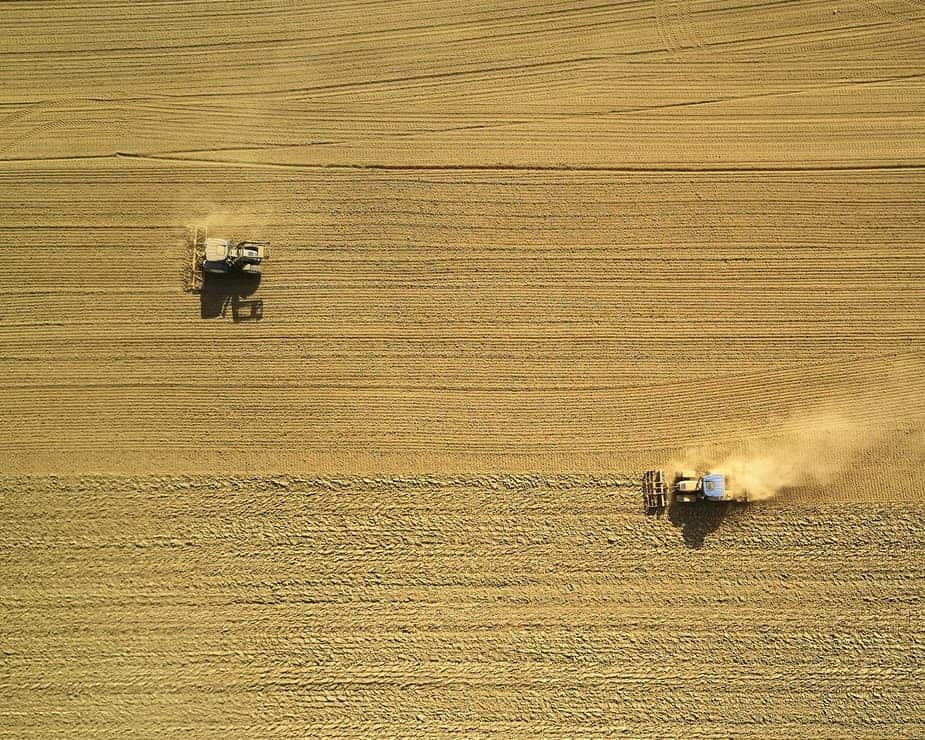Low genetic diversity, and the increasing use of antibiotics increase the likelihood of pathogens becoming a major health risk.

Agriculture has been one of the most impactful inventions in human history, but modern agriculture has changed dramatically.
Modern practices affect the entire planet, changing the distribution of animal species, triggering soil erosion, and producing a hefty amount of greenhouse gas emissions and pollution. The impact of agriculture isn’t just macroscopic, either — it’s also microscopic.
Previous research has shown that agricultural systems are highly conducive to the emergence and spread of pathogens, and intensive agriculture can increase the risk of zoonotic pathogens. A new study adds new evidence to that concern.
The study focused on the evolution of Campylobacter jejuni. C. jejuni is one of the most common causes of food poisoning in Europe and the Americas. The pathogen can cause bloody diarrhea in humans and is generally transferred from eating contaminated meat and poultry. Although it’s not as dangerous as typhoid or cholera, it can still cause serious illnesses, particularly in patients suffering from underlying health conditions.
Most cases occur as isolated events, not outbreaks, but around 1 in 7 people suffer an infection at some point in their life. It’s estimated that 20% of all cattle spread the pathogen through their faeces, and the bug is also highly resistant to antibiotics, due to the antibiotics used in farming.
In the new study, researchers analyzed the genetic evolution of the pathogen, finding that cattle-specific strains started emerging at the same time as cattle numbers increased in the 20th century — and intensive farming became a thing. According to the study conclusions, intensive agriculture brought changes in cattle diet, anatomy, and physiology — and these changes helped the bacterium to cross the species barrier, infecting humans.
Combine this with the increased movement of farm animals globally and you end up with a perfect gateway for the pathogen to move from farm animals to humans.
Professor Sam Sheppard from the Milner Centre for Evolution at the University of Bath, explains:
“There are an estimated 1.5 billion cattle on Earth, each producing around 30 kg of manure each day; if roughly 20 per cent of these are carrying Campylobacter, that amounts to a huge potential public health risk.”
This is not an isolated event — our interaction with animals (both farm animals and wild animals) can increase our risk of pathogen outbreaks. It is, perhaps, no coincidence that COVID-19 is also a zoonotic disease, potentially emerging as a result of our interaction with wildlife.
“Over the past few decades, there have been several viruses and pathogenic bacteria that have switched species from wild animals to humans: HIV started in monkeys; H5N1 came from birds; now Covid-19 is suspected to have come from bats.
The results come with a warning: if we continue in the same line, we are essentially encouraging pathogens to make the leap to humans, and the long term effects can cascade into long-term global health issues.
“Our work shows that environmental change and increased contact with farm animals has caused bacterial infections to cross over to humans too. I think this is a wake-up call to be more responsible about farming methods, so we can reduce the risk of outbreaks of problematic pathogens in the future.”
Professor Dave Kelly from the Department of Molecular Biology and Biotechnology at the University of Sheffield gives a similar warning:
“Human pathogens carried in animals are an increasing threat and our findings highlight how their adaptability can allow them to switch hosts and exploit intensive farming practices.”
Evangelos Mourkas el al., “Agricultural intensification and the evolution of host specialism in the enteric pathogen Campylobacter jejuni,” PNAS (2020). www.pnas.org/cgi/doi/10.1073/pnas.1917168117






